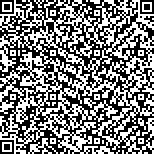本文已被:浏览 721次 下载 454次
Received:October 20, 2021 Published Online:May 20, 2022
Received:October 20, 2021 Published Online:May 20, 2022
中文摘要: 目的 评价脑氧饱和度(rSO2)目标导向的麻醉管理对青少年脊柱侧凸矫形手术唤醒试验的影响。 方法 选择2021年6月至10月于南京鼓楼医院择期行脊柱矫形手术的患者86例,采用随机数字表法分为两组,rSO2目标导向的麻醉管理组(T组)和常规对照组(C组),各43例。T组尽量维持rSO2下降≤基础值的10%;C组常规麻醉管理。根据术中rSO2数值的变化评估缺氧程度,统计唤醒前和术毕各等级脑缺氧的发生例数,计算患者术中rSO2下降超过基础值10%以上的AUC。唤醒成功时记录唤醒时间、Ramsay镇静评分和Rikerz躁动评分,评价唤醒质量;术毕记录患者麻醉恢复相关指标。结果 唤醒前和手术全程两组术中均未发生重度脑缺氧;T组脑缺氧程度低于C组(P<0.05),唤醒前及手术全程T组rSO2下降>10%的AUC均明显小于C组(P<0.05)。唤醒期间T组的Ramsay评分高于C组[3(1) vs 2(2), χ2 =7.75,P<0.01],Riker评分低于C组[4(1) vs 5(1), χ2 =9.81,P<0.01]。与C组比较,T组唤醒质量高,唤醒时间短,PACU停留时间缩短,苏醒期谵妄发生率降低(P<0.05)。结论 采用rSO2目标导向技术能够有效避免患者长时间脑缺氧暴露,增强脑保护和减少围术期神经认知障碍的发生,有利于提高术中唤醒质量,缩短唤醒时间,改善术后恢复,提高麻醉的安全和质量。
Abstract:ObjectiveTo assess the influence of goal-oriented anesthesia management on regional cerebral oxygen saturation (rSO2) for the wake-uPtest of scoliosis surgery in adolescents. Methods A total of 86 adolescent patients scheduled for scoliosis surgery were selected and randomly assigned into rSO2 goal-oriented anesthesia management grouP(T group, n =43) and control grouP(C group, n =43). The rSO2 value was monitored during operation and maintained its decline at lower than 10% of the baseline in T group, and the routine anesthesia management was conducted in C group. The degree of hypoxia was evaluated based on the change of intraoperative rSO2 value, the number of cases of cerebral hypoxia before awakening and after operation were recorded, and the area under ROC curve (AUC) was calculated for the patients with a intraoperative rSO2 decrease of more than 10% of the baseline value. The arousal time, Ramsay Sedation score and Rikerz agitation score were recorded and observed to evaluate the quality of arousal from anesthesia. The anesthesia recovery related indexes were also recorded after operation. Results No severe cerebral hypoxia occurred before awakening and during operation in both groups. The degree of cerebral hypoxia in T grouPwas lower than that in C grouP(P<0.05), and the AUC of rSO2 decreased by more than 10% before awakening and during operation in T grouPwas significantly lower than that in C grouP(P<0.05). Compared with C group, the Ramsay score in T grouPwas higher [3(1) vs 2(2), χ2 =7.75, P<0.01], the Riker score in T grouPwas lower [4(1) vs 5(1), χ2 =9.81, P<0.01]. Compared with those in C group, higher wake-uPquality, shorter wake-uPtime, shorter PACU residence time and lower incidence of delirium in wake-uPperiod were observed in T grouP(P<0.05). Conclusions For the adolescent patients with scoliosis surgery, rSO2 goal-oriented anesthesia can effectively avoid the long-term brain hypoxia exposure by adjusting the measures in anesthesia, enhance the protection of brain and reduce the occurrence of perioperative neurocognitive disorder, which is conducive to improve the quality of intraoperative arousal, shorten the arousal time, promote postoperative recovery, and improve the safety and quality of anesthesia.
文章编号: 中图分类号: 文献标志码:A
基金项目:
| Author Name | Affiliation |
| GU Wei, GU Xiao-ping, YIN Xia-li | Department of Anesthesiology, Drum Tower Hospital, Medical School of Nanjing University, Nanjing, Jiangsu 210008, China |
| Author Name | Affiliation |
| GU Wei, GU Xiao-ping, YIN Xia-li | Department of Anesthesiology, Drum Tower Hospital, Medical School of Nanjing University, Nanjing, Jiangsu 210008, China |
引用文本:
